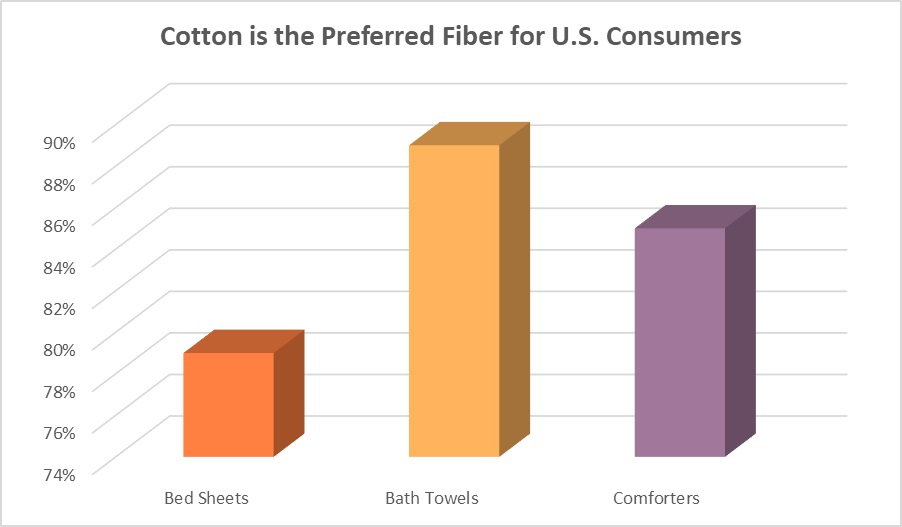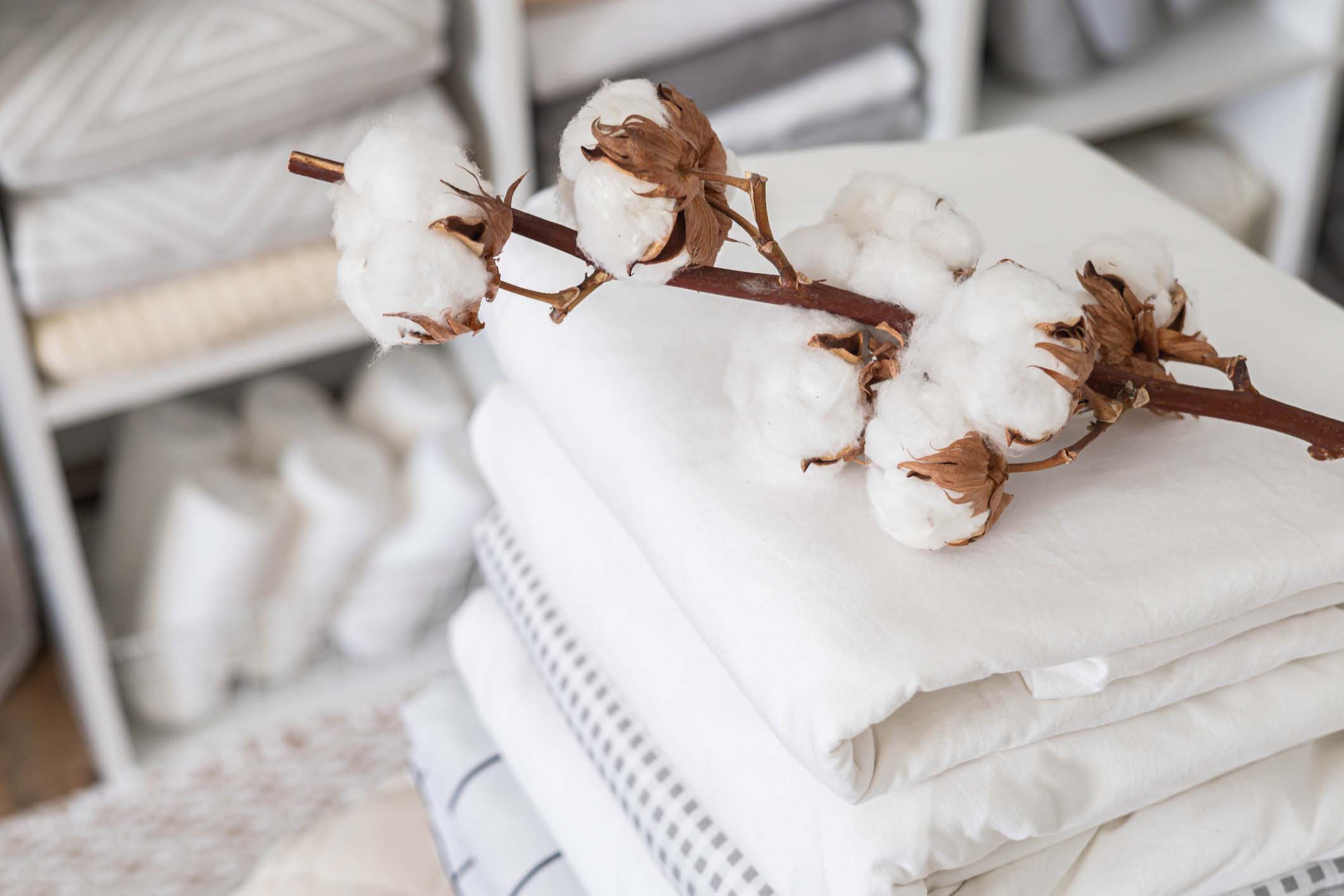Whether it’s being wrapped in a plush towel after a shower, curling up on the sofa with a soft throw blanket, or sliding under the bedcovers at the end of the day there’s something luxurious about being enveloped in natural fibers. As consumer demand for natural and sustainable home textiles increases, smart brands are recognizing the importance of meeting that need.
Among U.S. consumers, cotton is hands-down the most preferred fabric for home textiles, according to the 2024 Cotton Incorporated Lifestyle Monitor™ Survey. That goes for everything from bath towels (89 percent) to comforters (85 percent) to bed sheets (79 percent). By comparison, polyester is preferred by just 6 percent of consumers for bath towels, by 12 percent for sheets and by 10 percent for comforters.

This preference for cotton explains why most consumers (57 percent) say it is important to know the fiber content of their home textile products, according to the Cotton Incorporated 2023 Home Textiles Survey. And 7 in 10 say they are likely to look for textiles described as being 100 percent cotton.
Red Land Cotton’s Anna Brakefield, co-founder and co-owner, says there is a push right now for brands to become more transparent about what is in their products and how their products are made.
“We see this in food as well as textiles,” Brakefield told the Lifestyle Monitor™. Red Land’s cotton is grown on the “rich, red land” of northern Alabama. “If you are going after a remotely affluent market that is after more than just price point, you need to be able to boast about the good things behind your product — and there are plentiful benefits to sustainably grown and manufactured cotton home textiles.”
The reason most consumers (56 percent) look for the fiber content of their bath towels and sheets: quality, according to the 2023 Home Textiles Survey. In sheeting, consumers say fiber content also helps them determine comfort (51 percent), how soft or fluffy the product feels (50 percent) and indicates the product’s ability to keep them warm or cool (46 percent).
“A trend we are seeing is creating bedroom spaces that foster a sense of calm, restoration, comfort and softness,” says Cotton Incorporated’s Marcy Gang, executive account manager, global supply chain marketing. “This trend is such a natural fit for cotton because of its inherent softness, breathability, and hypoallergenic and wicking properties.”
The natural comfort of cotton sheets and bedding can now be amplified thanks to RESTech COTTON™ technology, a new technology developed by Cotton Incorporated. This multi-beneficial technology blends cool comfort, exceptional durability and softness while prioritizing sustainability.
It’s not enough to simply know it’s cotton…Our customers value the love, care and attention that goes into our transparent and traceable supply chain that starts at the ground level on our farm. It’s all about being educated and educating others on the value of a natural and home grown product.
Anna Brakefield, Co-Founder & Co-Owner, Red Land Cotton
One of advantages of RESTech COTTON™ technology is that it enhances cotton’s inherent thermo-regulating properties, thus amplifying sleep comfort. According to lab studies and internal research, RESTech COTTON™ technology dries 50 percent faster than rayon upon skin contact. But it also amplifies cotton’s natural ability to regulate temperature, which helps to maintain a decrease in body heat after falling asleep.
RESTech COTTON™ technology also outperforms polyester and rayon sheets in durability tests, while maintaining its appearance and feel over time. Additionally, the technology was developed to be 40 percent softer than untreated cotton sheets. And since RESTech COTTON™ technology is crafted from 100 percent natural, cotton fibers, it aligns with growing consumer demand for sustainable products.
Most consumers are willing to pay more for performance features in their home textiles, especially temperature control (33 percent), odor resistance (30 percent), stain resistance (27 percent), moisture management (28 percent) and antimicrobial properties (24 percent), according to the 2023 Home Textiles Survey.
The global home textile market was valued at USD $124.7 billion in 2023 and is expected to grow to $176.9 billion at a compound annual growth rate (CAGR) of 6 percent from 2024 to 2030, according to a report from Grand View Research. The North American market is expected to grow at a CAGR of 5 percent during the same period.
“[There has been] a shift towards sustainable and environmentally-friendly products, and this has impacted the home textiles industry as well,” the Grand View Research report states about the North American market. “Consumers are increasingly seeking out eco-friendly and organic products, such as bedding, towels and curtains made from sustainable materials, which are manufactured in an environmentally responsible manner.”
Red Land Cotton’s Brakefield says the more consumers learn about the harms of plastic and microplastics from synthetic fabrics like polyester, the more they wish to rid their homes of it.
“While plastics are convenient, they aren’t good for us or our environment,” she says. “The educated consumer knows this and is willing to pay a premium for a product made without these synthetic yarns. The Red Land Cotton customer values knowing where their bedding, towels and clothing comes from. It’s not enough to simply know it’s cotton…Our customers value the love, care and attention that goes into our transparent and traceable supply chain that starts at the ground level on our farm. It’s all about being educated and educating others on the value of a natural and home grown product.”
